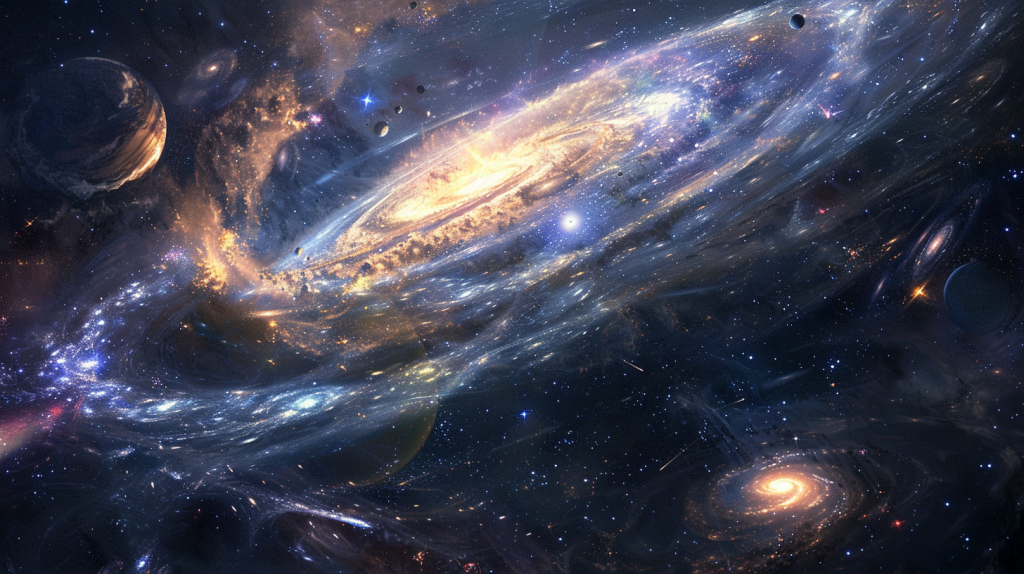We now know how the early Universe lit up, thanks to the data from the Hubble and James Webb Space Telescopes. Small dwarf galaxies, bursting into life, cleared the murky hydrogen fog filling intergalactic space. This groundbreaking discovery was published in February, revealing key insights into the Universe’s history.

The Role of Dwarf Galaxies
Dwarf galaxies played a crucial role in lighting up the early Universe. According to astrophysicist Iryna Chemerynska from the Institut d’Astrophysique de Paris, these tiny galaxies produced ionizing photons. These photons transformed neutral hydrogen into ionized plasma, a process known as cosmic reionization. Understanding these low-mass galaxies helps us piece together the Universe’s evolution.
From Darkness to Light
After the Big Bang, the Universe was a hot, dense fog of ionized plasma. Photons couldn’t travel through this fog, making the Universe dark. About 300,000 years later, as the Universe cooled, protons and electrons formed neutral hydrogen. Light could now travel, but there were no sources to produce it yet. From this hydrogen, the first stars were born, illuminating the cosmos.
The Power of First Stars
The first stars emitted strong radiation, powerful enough to reionize the gas. By the time the Universe was a billion years old, this process, called cosmic reionization, was complete. Light could travel freely, ending the cosmic dawn and lighting up the Universe.
Surprising Discoveries with JWST
Scientists initially thought powerful sources like black holes and large galaxies caused reionization. However, the James Webb Space Telescope (JWST) revealed a different story. It showed that dwarf galaxies were the main players during this period. These galaxies, although small, emitted more than enough energy to reionize the Universe.
Studying Abell 2744
An international team, led by astrophysicist Hakim Atek, studied data from the galaxy cluster Abell 2744 using JWST and Hubble. This cluster acts like a cosmic lens, magnifying distant light and allowing researchers to see dwarf galaxies near the cosmic dawn. Their analysis revealed that these tiny galaxies were far more abundant and brighter than expected.
The Impact of Dwarf Galaxies
The team’s research found that dwarf galaxies outnumber large galaxies by 100 to 1. These small galaxies collectively emitted four times the ionizing radiation typically attributed to larger galaxies. Despite their size, they had a massive impact on the Universe’s state during reionization.
Future Research
While this discovery is exciting, more work is needed. Researchers plan to study more regions of the sky to confirm that these findings are representative of the entire early Universe. This ongoing research promises to uncover even more about our cosmic beginnings.
Uncharted Territory
“We have now entered uncharted territory with the JWST,” said astrophysicist Themiya Nanayakkara from Swinburne University of Technology. This research opens up new questions about the Universe’s evolution, bringing us closer to understanding our origins. The study was published in the journal Nature, marking a significant milestone in astrophysics.
